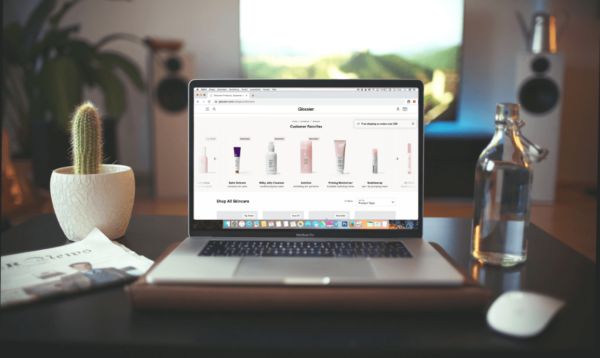
21 Ecommerce Product Recommendation Tips (That Increase Conversions)
Including intelligent ecommerce product recommendations as part of your user experience can increase the average order value of your conversions. Here's how to get started.
A timely product recommendation can lead shoppers to choose one product over another. It can be the nudge they need to make a purchase or, at the very least, inspire them to browse a category of products they didn’t even know they needed.
What is a Product Recommendation?
A product recommendation is exactly what you think–a recommendation for a product.
Have you ever made a selection at a local store, based on a product recommendation from the owner or a sales clerk? Has a product recommendation from a friend or family member ever been the deciding factor in your choice of which product to purchase?
Celebrity endorsements (paid or unpaid), advice given by a current user, “Best 10” lists on blogs – all of these mentions, and more, leverage the power of product recommendations. Looking for the best dried flower bouquet? Look no further than product recommendation lists on Google.
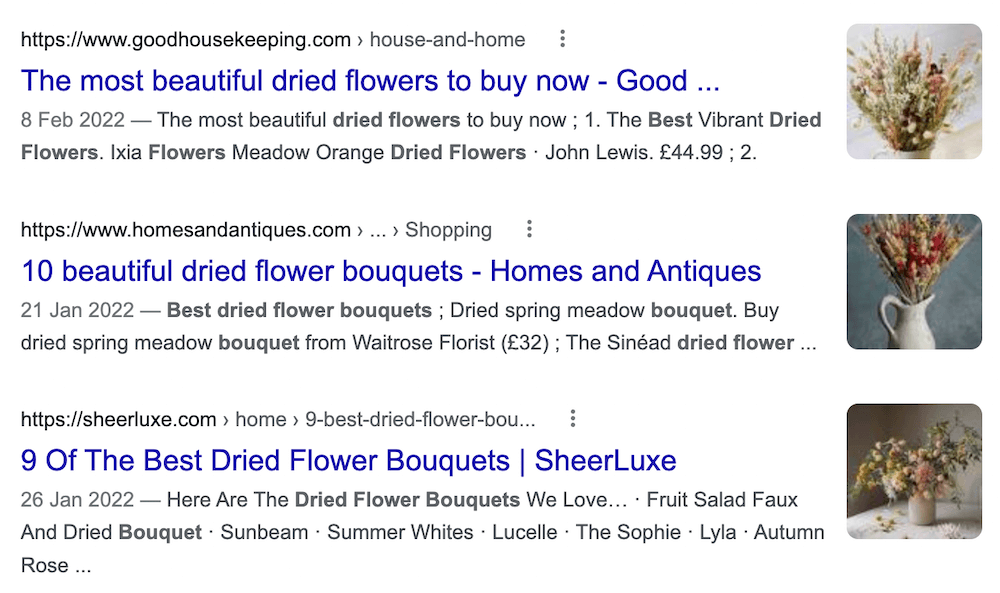
As an ecommerce manager, though, you don’t have to wait for someone else to recommend a product to your customers. You can make product recommendations while the prospect is in the process of shopping on your website. Personalized product recommendations can work to improve the user experience as well as the conversion rate of your site.
In this article, we’ll reveal some of the most effective ways we’ve found to deliver product recommendations to your customers. The information we provide here will help you sell more products, more often.
Guaranteed.
How Do Ecommerce Product Recommendation Engines Work?
An ecommerce product recommendation engine is a piece of technology that displays recommended products to shoppers throughout your store. It uses machine learning to get smarter and show increasingly relevant products to shoppers based on their interests and previous browsing behavior.
While it’s possible to manually implement rudimentary “also-liked” recommendations on your ecommerce site, product recommendations best practices call for the deployment of a ‘product recommendations engine’.

There are three basic approaches used to configure the underlying algorithm:
- The content-based filtering method analyzes customer data on the likes and dislikes of each user (cookies allow tracking over multiple visits), then makes recommendations based on the browsing history of that user. The idea behind content-based filtering is that if you enjoy a certain item, you’ll likely also enjoy a similar item. An example of a content-based filtering system would be if you were listening to Pandora and consistently ‘liked’ downtempo jazz music. The filtering system would take that information and begin recommending similar music to you based on the songs you preferred.
- The collaborative-filtering method incorporates data from users who have purchased similar products, then combines that information to make decisions about recommendations. The advantage to this filtering method is that it is capable of making complex recommendations on items such as music or movies without having to ‘understand’ what the item is. This method of filtering operates under the assumption that users will prefer recommendations that are based on purchases they made in the past. Here’s an example: If customer A likes a specific line of products that customer B also likes (assuming they have similar interests), then collaborate-filtering would assume that customer A would like other products that customer B purchased and vice versa.
- A hybrid method combines the content-based and collaborative-based methods to incorporate group decisions but focuses the output based on the attributes of a specific visitor. An example of a hybrid filtering system would be how Spotify curates its personalized ‘Discover Weekly’ playlists. If you’ve ever listened to a personalized Spotify playlist, it’s shocking how accurately they’re able to recommend songs based on what you like. The secret behind how they pull this off is through a complex hybrid filtering system that aggregates data on your listening habits as well as similar users’ listening habits, to create a playlist of unique songs that align with your personal taste.
All three methods use machine-learning algorithms to fuel the process and provide personalized product recommendations. While the mathematical principles behind each are elaborate and complicated, the application to your online store doesn’t have to be overwhelming.
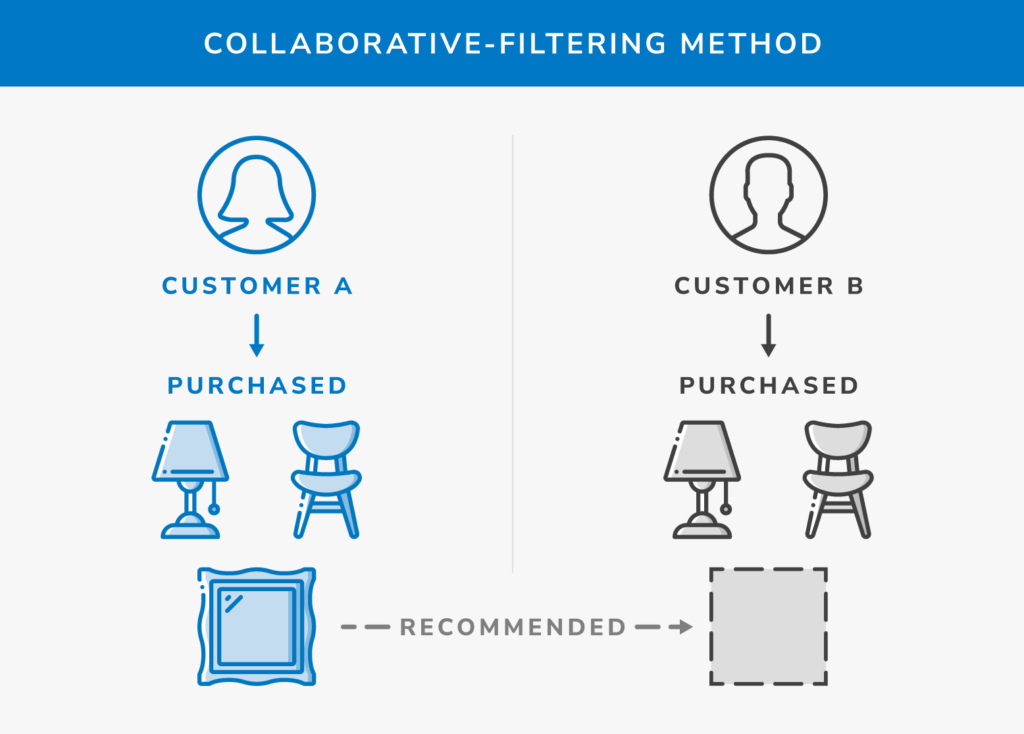
Why Are Product Recommendations Important?
Is the product recommendations process really worth the trouble? Isn’t the incorporation of machine learning a bit beyond the scope of all but the largest ecommerce websites?
Those are the types of questions we often hear. There are times when it seems the high-tech movement is going too far, and machine-learning algorithms are a prime example of that complaint.
Given the potential benefits, though, the argument often settles itself. When a tool proves itself sufficiently valuable, the question moves from “Why?” to “How?”.
- Research conducted by Barilliance in 2018 concluded that product recommendations accounted for up to 31 percent of ecommerce revenue. On average, customers saw 12 percent of their overall purchases coming from products that were recommended to them.
- A Salesforce study of product recommendations concluded that visits where the shopper clicked a recommendation comprise just 7 percent of total site traffic, but make up 24 percent of orders and 26 percent of revenue.
- The conversion rate for visitors clicking on product recommendations was found to be 5.5x higher than for visitors who didn’t click.

- As online shoppers become more used to personalization, they equate it with professionalism – meaning your site needs to bump up to keep up.
- An Accenture report says personalization increases the likelihood of a prospect purchasing from you by 75 percent.
Studies increasingly show the value of product recommendations and the critical role they play in personalization strategies. Recommendations not only lift conversion rates, but they also help deliver an improved user experience to keep visitors coming back and can boost the average order value.
Once an ecommerce manager is convinced of the benefits of a product recommendation engine, the next step is to determine product recommendation best practices and configure the product recommendation algorithm accordingly.
21 Tips for Ecommerce Product Recommendations
Your ecommerce site will lend itself to some of the following tips, but not to others. We’ll list the kinds of tactics we’ve seen our clients effectively implement. You choose the ones that seem most applicable to your own business.
1. Display Products Based on Browsing History
Displaying a list of suggested products based on the visitor’s browsing history (“Recommended for you”) is an often-used and effective type of product recommendation – to add deeper impact, personalize with the shopper’s name.
This beauty brand recommends products based on the shopper’s skin type and eye color.
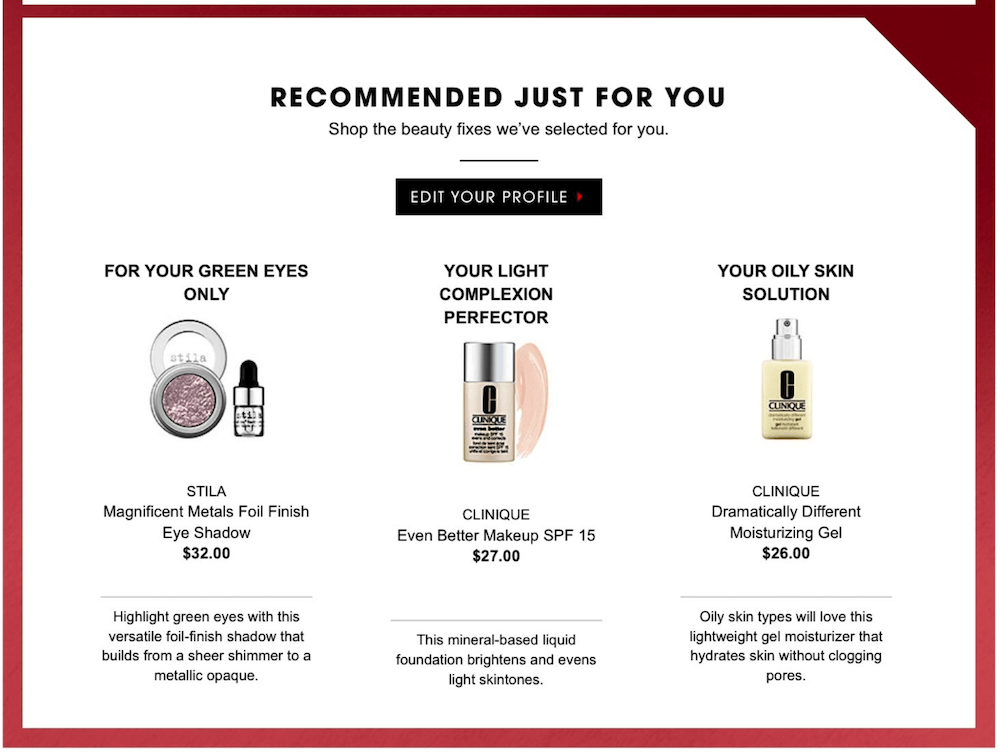
2. Use “Frequently Bought Together” Recommendations
If a bundle of items is regularly bought together, there’s usually a good reason for it. Maybe shoppers tend to buy a pack of batteries alongside a new flash light, or perhaps they purchase plant milk to go with their coffee beans. Suggesting products that are often bought together not only gives customers value (because who wants to be left high and dry without batteries for their flash light?), but it increases the average order value (AOV) at the same time.
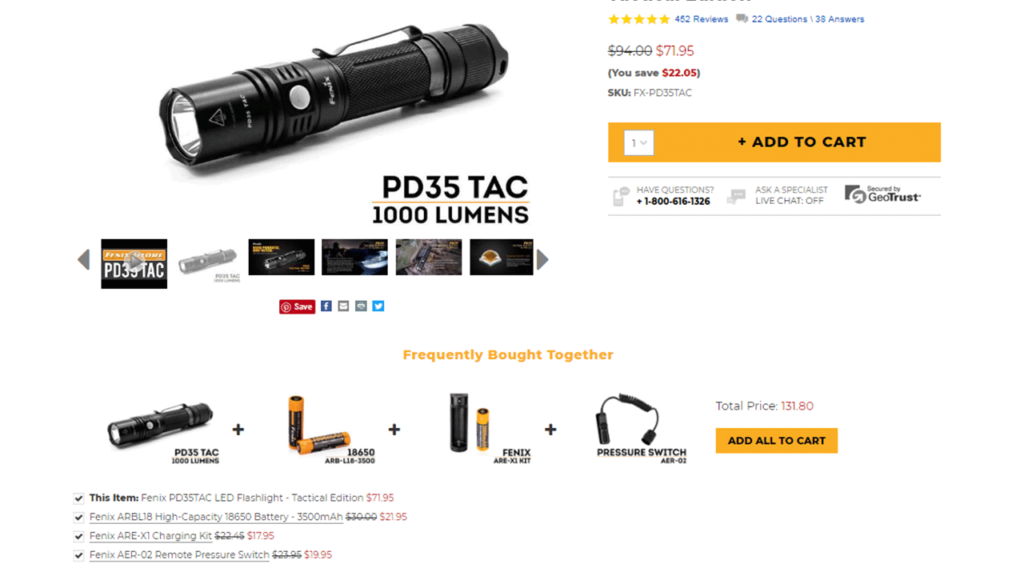
3. Use Product Recommendation Engines to Personalize Your Email Campaigns
Integrate product recommendations into your email marketing strategy by sending personalized emails to your customers with product recommendations based on their recent purchase history. Tarte uses products that a customer has shown interest in to serve up relevant recommendations for other product lines.

4. Introduce Shoppers to New Items
“Featured recommendations” and “Recently viewed” suggestions can introduce shoppers to items they wouldn’t have thought about searching for. This can be great inspiration for new customers who don’t necessarily know the kinds of products you stock or who are looking for a starting point.
Enjoying this article?
Subscribe to our newsletter, Good Question, to get insights like this sent straight to your inbox every week.
5. Save Potentially Lost Sales
Providing access to the shopper’s browsing history can help save sales that may have been lost had the customer not been able to relocate an item earlier viewed. The last thing you want is a customer to leave your site because they can’t find the awesome bamboo lunchbox they were originally interested in.
TC Straps details the items a shopper has recently looked at so they don’t forget.
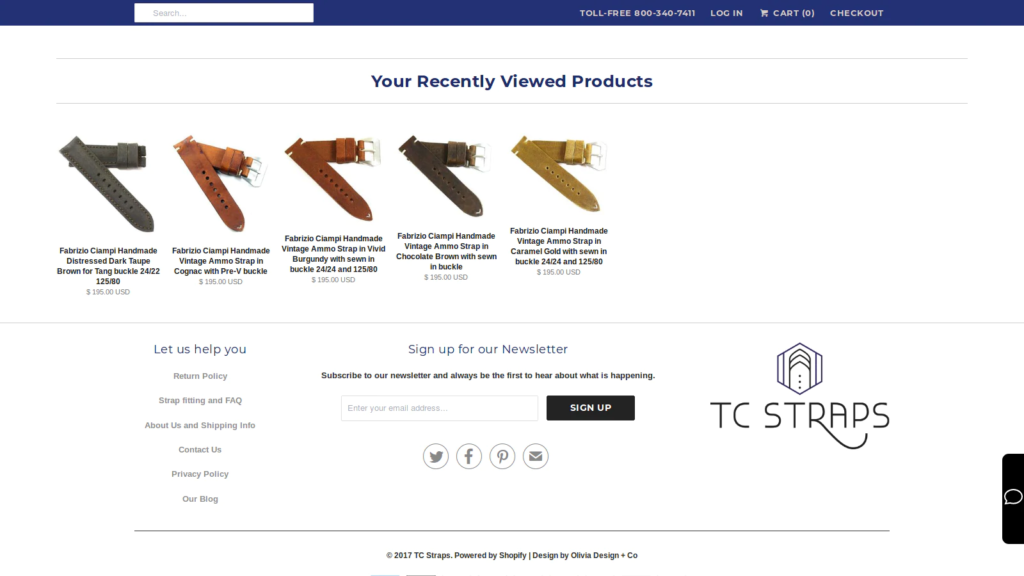
6. Show Products “Related to Items You’ve Viewed”
In particular, display this type of product recommendation on product pages to help encourage users to add additional items to their cart.
7. Provide Social Proof
“Customers who bought [this item] also bought [that item]” recommendations provide social proof and peer-generated recommendations of relevant products the user may be interested in.
Amazon is the king of this, showcasing products that similar customers also bought to spark additional purchases.

8. Point to New Products
Alert viewers of products that have been updated by generating “There is a newer version of this item” notices.
9. Personalize Product Recommendations
Personalize recommendations by showing items related to previous purchases (“Since you already own this, you may also want this”). As well as using information about past purchases, you can also personalize recommendations based on other items a customer has shown interest in and other attributes, like their hobbies, skin type, or hair color.
10. Feature Best-Selling Items For Each Brand
Show your most popular products from a range of brands for indirect social proof and as a way of adding confidence to the purchase. Recommending best-selling products on the homepage has shown to be a highly-effective tactic for hooking your user’s attention as soon as they reach your site.
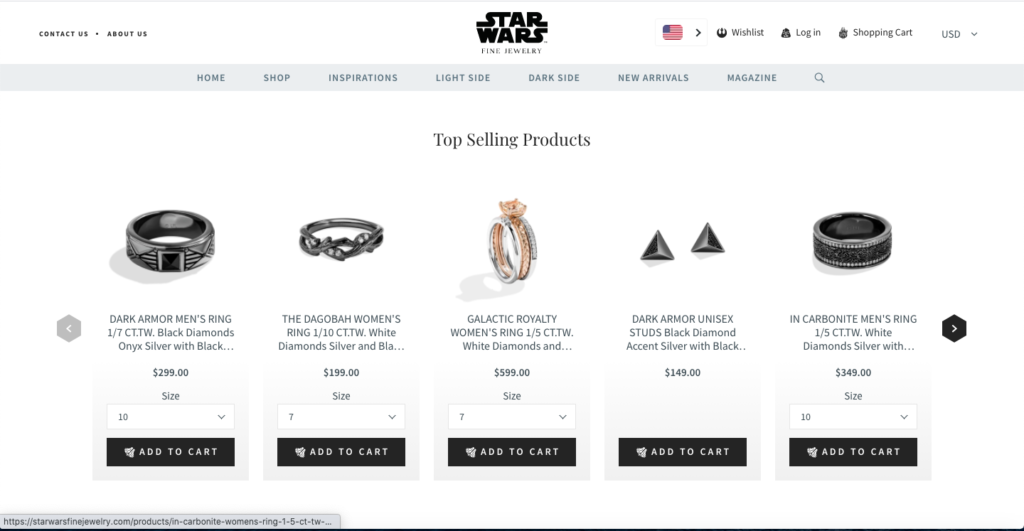
11. Generate Product Bundles
Group together items that are frequently purchased together and offer a special discount to customers who purchase all items in one transaction.
12. Show Bestsellers Across Different Categories
Introduce shoppers to new product lines in categories they may not have previously looked at by showcasing a range of bestsellers from across different categories.
13. Make Sure Recommendations Are Relevant and Timely
Catch shoppers while they’re actively in buy mode by ensuring recommendations land at just the right time (i.e. don’t promote seasonal products at the wrong time of year!).
14. Keep Popular Products Highlighted
Adjust your recommendations to keep popular products highlighted and to provide additional viewing opportunities for lower-selling items (20 percent of your items will provide 80 percent of your sales).
15. Showcase Your Highest Rated Items
Try injecting some social proof into your product recommendations by displaying items that have the highest customer reviews. This brand recommends relevant products with high-star ratings at the “Add to Cart” stage.

16. Know Your Visitors
The more you can personalize product recommendations, the better. Segment audiences based on demographic information as well as psychographics, like their interests, lifestyle, and challenges. You can then base your recommendations on their most pressing pain points or needs.
17. Cross-Sell Relevant Products Via Recommendations
Provide product recommendations when items added to the cart require accessories (fishing reels need fishing line, flashlights need batteries, shoes often require socks). This brand recommends coffee accessories to go with the items in the cart.

18. Use Product Recommendations to Upsell
Use product recommendations for moving the buyer up to a more fully-featured version of the one currently being browsed (upselling). Here, customers can upgrade their order at the point of sale.
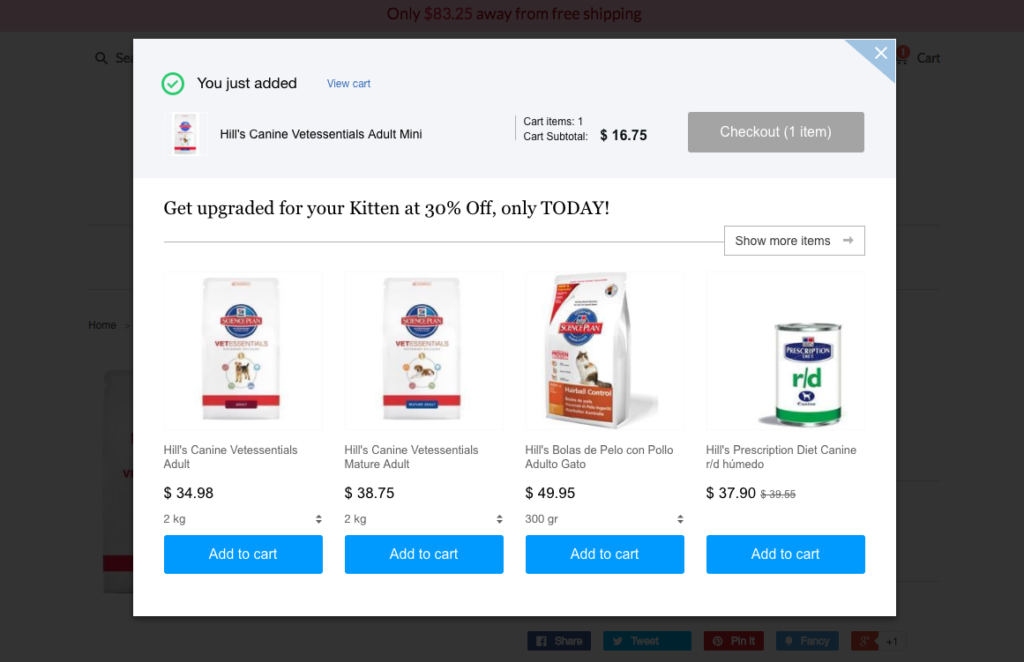
19. Get Seasonal With Your Recommendations
Use product recommendations to remind the shopper about upcoming holidays or other special events.
20. Never Stop A/B Testing
Your product recommendations engine isn’t a set it and forget it function; add it to your testing regimen for conversion optimization. The more you tweak and measure it, the better your results will be.
21. Offer Product Pairings On the Cart Page
Before your customers move into the checkout process, you have one last opportunity to present them with product recommendations. If you opt to use this tactic, make sure the products you’re offering don’t distract users from completing the purchase. Cross-selling related items that complement the items already in their cart is the best approach here.
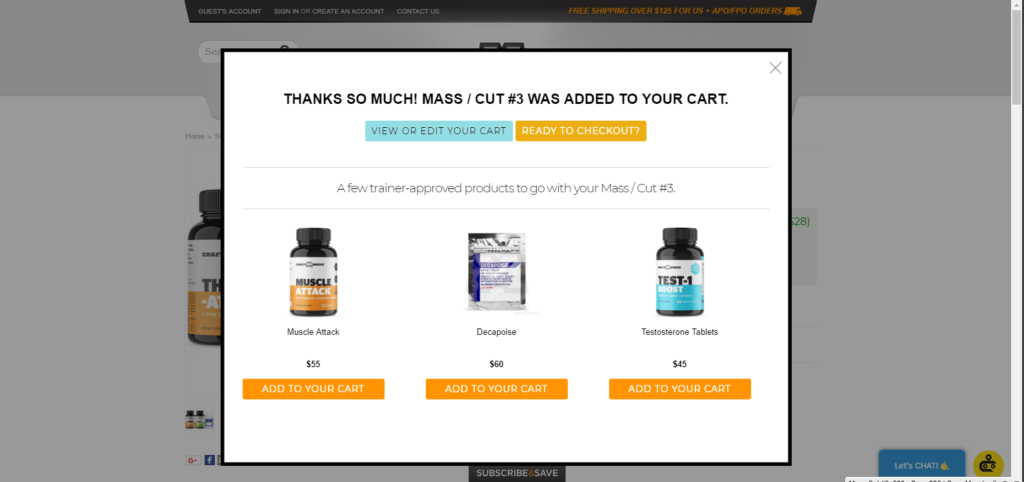
How to Display Product Recommendations Throughout the Sales Cycle
Not all customers are in the same spot. Some have their wallet out ready to purchase, while others are still mulling over their options. As a result, they require different types of product recommendations depending on where they are in the sales funnel.
Someone who is ready and raring to buy will want highly-targeted recommendations while a shopper that’s not as far through the funnel might want to see a variety of suggestions to see what tickles their fancy.
Here are some ways you can present product recommendations on each page to drive the most sales and create an enjoyable customer experience.
Homepage: “Most Popular” and “Recently Viewed”
Your homepage is one of the first pages visitors will land on. This is essentially a springboard for all different kinds of customers–both existing shoppers who have typed your URL directly into their search bar and brand new customers who have navigated to your site from a Google search or a social media ad.
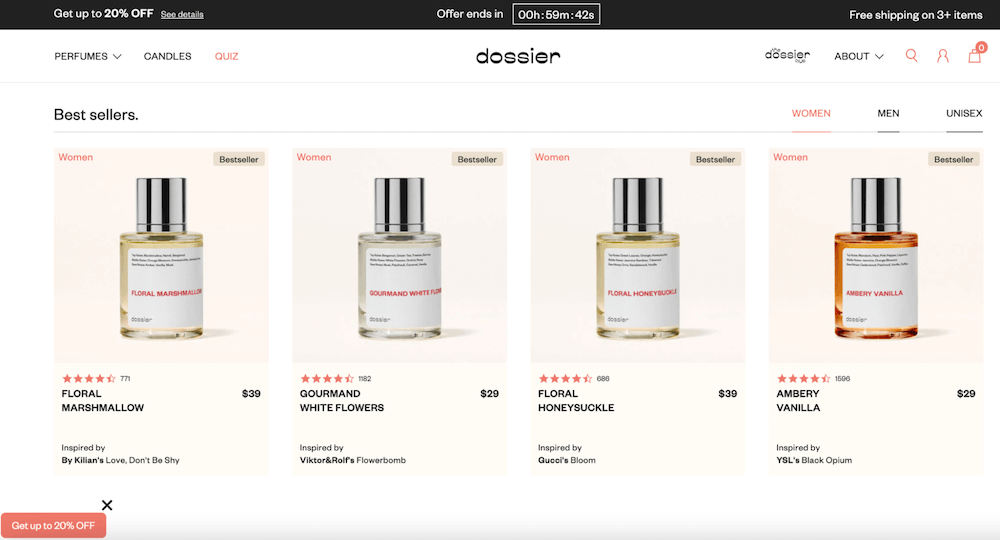
Implementing the “Most Popular” product recommendation strategy works best here because you can showcase your bestsellers to new shoppers and remind existing customers what sets you apart. You can get granular here, too, and create a dynamic homepage for returning customers so that the recommended products are those they have shown interest in before, like their recently viewed items or a product that’s relevant to their latest purchase.
Category Pages: “Most Popular”
Products can get lost in category pages, especially if you have a large inventory. Avoid shoppers missing out on your bestsellers by promoting your “Most Popular in Category” products on each relevant category page. This introduces existing shoppers to a fresh range of products in the category but also sparks inspiration for new shoppers who are just beginning to browse.
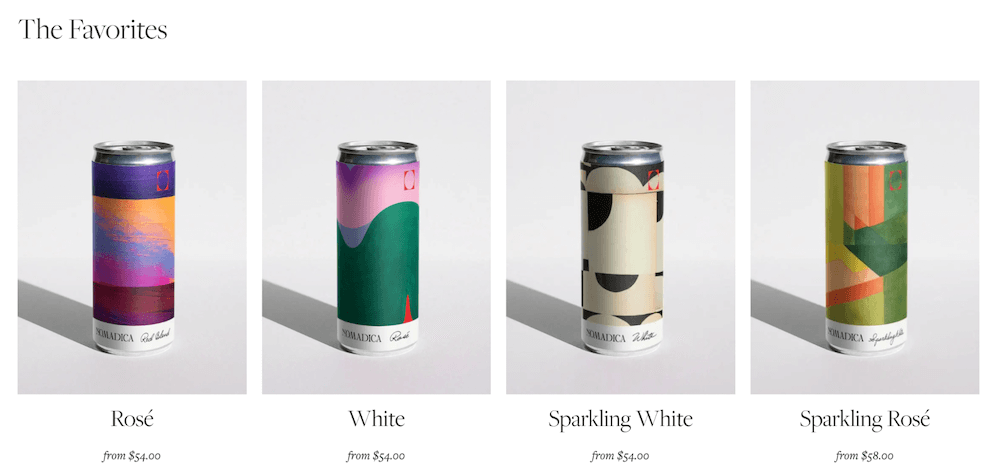
Product Pages and Cart Pages: “Bought Together” and “Similar Products”
If a shopper is on a product page or has added an item to their cart, chances are they’re interested in that product–or, at the very least, similar products. Use the “Bought Together” and “Similar Products” strategies here to upsell relevant items or cross-sell products that complement each other.

Our Tip: Test Product Recommendations Across Your Site
We recommend testing out different product recommendation strategies on different pages to see which ones are the most engaging for your audience. You might find that sharing your bestsellers on the homepage doesn’t get you the results you want, and instead, you get more conversions by recommending recently viewed products or a personalized selection of items based on previous browsing behavior.
Product Recommendation Q&As: Everything You Need to Know
Understanding how product recommendations fuel the sales cycle is important, but it also helps to know how you can make the most of them and where they can best be implemented.
How Can Product Recommendations Be Improved?
Product recommendation engines use machine learning to get smarter. If shoppers consistently click on a recommended product in a certain category or continue to buy a certain item, the AI will soon learn that those products are the most popular.
In addition, the engines can use previous data to serve personalized recommendations to each individual customer based on the product pages they’ve visited and spent the most time on, as well as their past purchases.
How Do You Write a Product Recommendation?
You aren’t tasked with writing product recommendations–the AI technology does it for you. The only thing you need to worry about is writing the product titles and descriptions so they match your brand voice and resonate with your audience.
What Are Personalized Product Recommendations?
Personalized product recommendations use existing customer data to serve shoppers relevant suggestions. This data can include product pages a shopper has visited, items they’ve added to their cart, previous purchases, and any first-party information they’ve shared, such as their lifestyle, interests, and hobbies.
How Effective Are Product Recommendations?
The stats above show that product recommendations can be incredibly effective when implemented well. The key is to put the right kind of product recommendations at the right points in the sales cycle. For example, share your bestsellers on the homepage to attract both new and existing customers, but share personalized recommendations on the “Add to Cart” page or at checkout.
The #1 Reason Why You Should Get Started with Product Recommendations
Strategic marketing plans vary from company to company. Tactics that fit one business often aren’t a wise move for another business. Implementing a product recommendation engine, however, is something every ecommerce manager should seriously consider.
Here’s why: your competitors will soon enough. And the advantage gained from applying product recommendation examples, like the ones given above, is significant.
If you’re looking for a simple and highly-effective way to improve personalization for your ecommerce store, product recommendation engines may be an investment worth making. Beyond simply getting your customers to add more items to their cart, you’re providing them with a better overall shopping experience through customized recommendations for products that they otherwise might not have found on their own.
Here at The Good, we’re committed to working with brands both large and small to help improve user experiences and drive conversion rates upward. If you’re seeking actionable ways to improve the shopping experience of your site, qualified brands can sign-up for a free landing page assessment where we’ll take a close look at your site and identify ways to begin optimizing it for more conversions.

About the Author
Jon MacDonald
Jon MacDonald is founder and President of The Good, a conversion rate optimization firm that has achieved results for some of the largest online brands including Adobe, Nike, Xerox, Verizon, Intel and more. Jon regularly contributes content on conversion optimization to publications like Entrepreneur and Inc. He knows how to get visitors to take action.